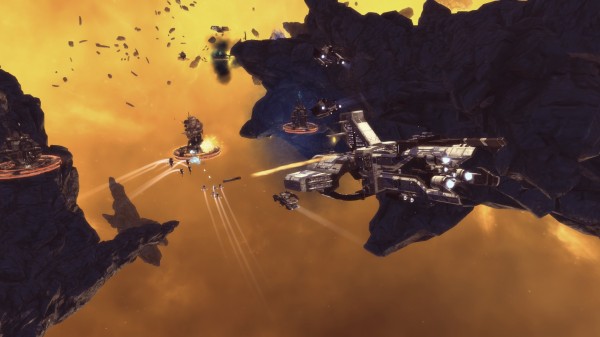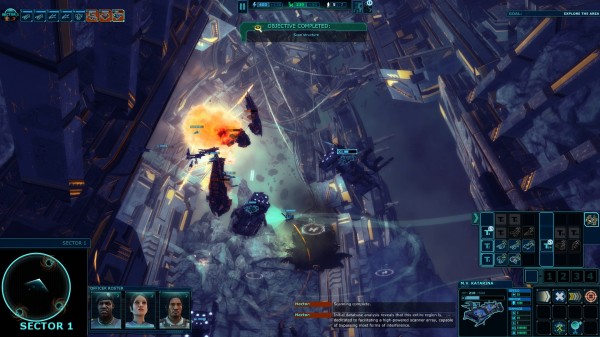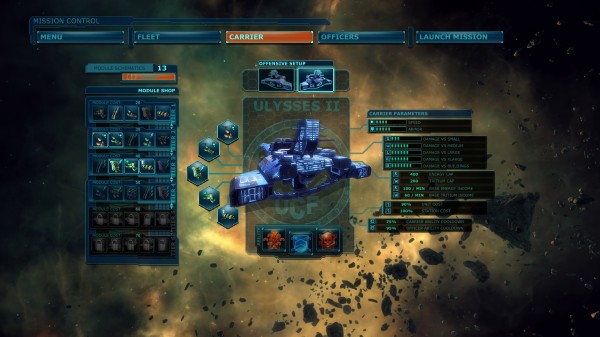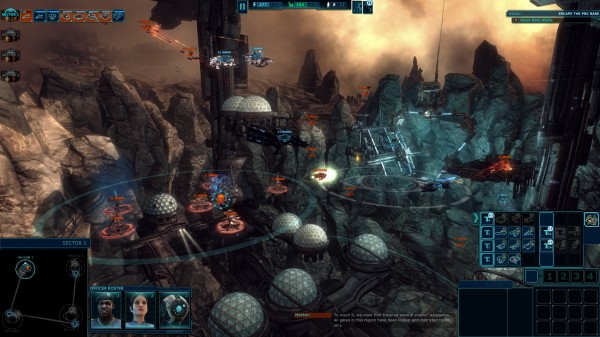
Ancient Space PC Review
It feels like an ancient time since I last played a real-time strategy (RTS) game set in space. It’s not that I don’t like the genre, it’s just that I usually end up playing an RTS game set on land, like the classic Command & Conquer games or Total Annihilation. With so many games being released in this current climate, I find that I have been busy concentrating on so many titles that I haven’t had the chance to see what new games entered the space RTS genre. To give you a background on what I like about the genre, I enjoy RTS games that focus on resource gathering and building armies, but don’t often get into the multiplayer aspect of them much, so hearing about CreativeForge Game’s first title, Ancient Space, and how it focuses on bringing a story to a single-player (no multiplayer here) RTS had me intrigued to the point I decided to put everything down and check it out.
Ancient Space seems to be reaching directly to the sci-fi crowd and enticing them in with its cast. The game’s characters are voiced by people who are straight from the world of sci-fi. You have the likes of Ron Glass from Firefly, Aaron Douglas from Battlestar Galactica, Dina Meyer from Starship Troopers and Dwight Schultz from a couple of Star Trek shows, all who deliver a somewhat decent performance with the material on hand.

The story follows Dr Bruke and her expedition into the Black Zone, a section of space that was involved in an incident with Ulysses 1. Nearly 10 years have passed since that disaster, and now the commissioner sees it fit to send in an expedition crew with Ulysses 2 to seek answers to exactly what happened. The plot is told through introductory cutscenes before missions and during dialogue in game. This is a story that can be enjoyed, but it is filled with typical sci-fi clichés and twists that you may find interesting, but most will see them coming due to the game’s unoriginal plot points. It’s also not memorable, with people and places involved mostly forgotten from memory after finishing the game, and while the title is filled with voices from famous actors, these don’t help in creating compelling and interesting characters that stick with you over the course of the game’s campaign.
With no multiplayer of any sorts, you are left with a small skirmish mode (3 levels and isn’t really worth speaking about) and the campaign missions. Every mission begins in similar fashion, the game gives the player a small group of starting ships, along with the commanding ship Ulysses 2, and from there you can build more to reinforce your fleet. Ulysses 2 acts as the mobile command centre. It’s a critical ship that has to survive, as any built units are created in there and then dropped out into space when ready. There is a unit limit in play, and it often remains on the small side, with most missions hanging around the 20s. The size of the ship will determine how many units it takes up. Agile fighters will take one unit and are classed as small, while the larger ships (large and extra-large) come with more defence and attack power and require two or more units. This mechanic means you cannot simply build a huge army and then crush the enemy army by overpowering them, instead, Ancient Space wants you to strategize.

Strategy is something that Ancient Space wants to thrive on. There’s a pause button available that will freeze time, giving the player the opportunity to scout out the battlefield or offer a breather if combat isn’t going as intended. Size of ships plays into the game’s mechanics, coming across as an implementation of the familiar rock, paper, scissors system. The small agile ships can usually become a pain for larger ships, while medium and small ships will put up a good fight against ships of similar size. A nice coloured line (green for win, red for doom, as I like to think) will alert you in regards to how that ship will perform against the targeted enemy.
The developers have no doubt come up with some neat ideas. I like how you can pick three commanders from a wide selection, each one having their own unique power that can be used in the mission. One person can give you shields, while another can buff attacks for a few seconds. Activating these at the right time can be absolutely devastating for the computer. Ships can be upgraded between missions, with better gear unlocked as you progress further that allows you to improve attacks against the four various sizes of ships, increase speed, more attack power or even switch the state of Ulysses 2 to be an attacking or defensive spacecraft. Ancient Space comes across as if it’s focused on the strategy part of real-time strategy. The problem is that there are some issues with the game that I personally find make the title a shallower experience than it should be.

First up is the 3D space that, well, space is full of. There is trickery going on in Ancient Space, because even though ships can move in 3D space, this is only ever done to reach a target in a base ring, you can’t actually manually move units at will to any height you would like, so it’s irrelevant where you are in 3D space, as units will automatically move to the right height to engage in combat. This is a huge shame, as having the full 3D field of space to strategize could have been something special. Instead, you are given a groundless – if rather gorgeous on the eyes – map that is filled with hazards, such as wreckage, buildings and space rocks that stop you from progressing to various areas.
Resources are generously given by the commander ship to the point that you could most likely get past a lot of the earlier missions without ever having to plant any stations to increase the rate the resources generate back. For most of the campaign, I could replace a ship that had been destroyed with another one without ever worrying if I had the resources to build it. Increasing the speed of resource building is done by placing stations in blue circles placed around the map, acting as a sort of control point. Once a station is built, it can be given a defensive weapon to keep the zone protected. Even though you don’t have to target these key areas, in all my missions I went from one to another in a linear fashion and that seemed to help me tremendously in pushing towards the enemy’s side. That’s the issue I had with the design of the campaign. If a typical mission was about destroying something (rather than defending or escorting, which some missions are about and can be rather fun to participate in), then I would just follow this plan and easily finish the mission with ships being destroyed and built while tugging along to the final objective.

While on the topic of sectors, this is a mechanic that I also feel isn’t fully explored. A map will traditionally have a couple or more sectors to jump between by going through a worm hole. A sector is often small, and so the map is broken up into small sections, which removes the sense of scale from the game. Maybe I was looking for huge space battles, but each section is just a small battleground between your fleet and the enemy’s, and it seems that it forgot to add some strategy to this, as you can get away just ploughing your force through each worm hole, rather than being forced to split units and fight two battles at once. If there is branch off in the sectors, then it’s mostly reserved for doing a side mission, which can be done by just sending your entire fleet towards that destination.
All these ideas and problems come together to create a game that can be enjoyable, but I could never shake this feeling that Ancient Space suffers from a lack of enthusiasm, its battles are dry and dull, there isn’t room to experiment with units and the level design doesn’t invoke tactical management that usually comes when a game has great map designs. Having a focus on powers and upgrades has ended up leaving behind what makes people love the genre – having strategy that gets the player’s brain ticking. I never got that from this game. Ancient Space is a title that loves to flash off its beautifully crafted nebulas, but suffers from gameplay that is too focused on one aspect of its mechanics, leaving the rest of them to weaken the overall experience. Some fans will find things to like about Ancient Space, but its gameplay isn’t as infinite as the depths of space that surrounds us.
